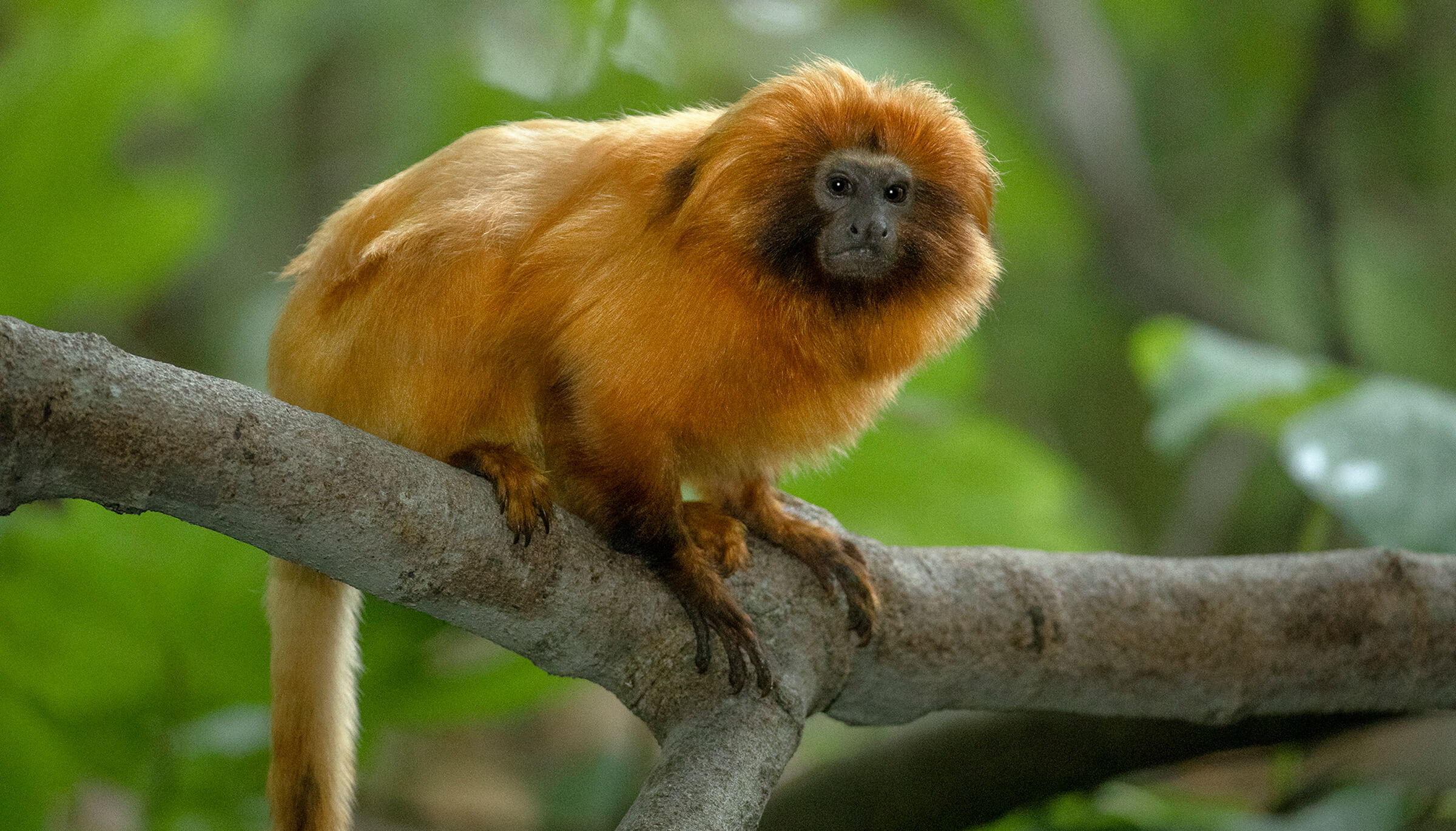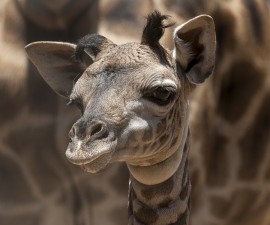BY Karyl Carmignani
Photography by Ken Bohn
It’s no secret that the San Diego Zoo is home to world-class botanical gardens, thriving mixed-species exhibits, and a fascinating array of nonhuman primates. Nowhere is this trifecta of biodiversity more astonishing than in Parker Aviary, located just past the orangutans. Last spring, a pair of golden lion tamarins, Penny and Milo, were added to the lushly forested aviary. “It’s the only place in the Zoo where guests can be in the exhibit with the primates,” said lead keeper Janice McNernie. The puppy-sized monkeys bring feisty, fast, orange action to the immersive experience, dashing through the treetops, scampering across vines over the walkway, and perching on branches…and sometimes even pausing on their species identification sign! Between the shimmering, auburn-haired tamarins, the carrot orange plumage of the Andean cock-of-the-rock birds, and the flamboyant bills of the toco toucans, guests will delight in the vibrant flashes of color against the emerald foliage.
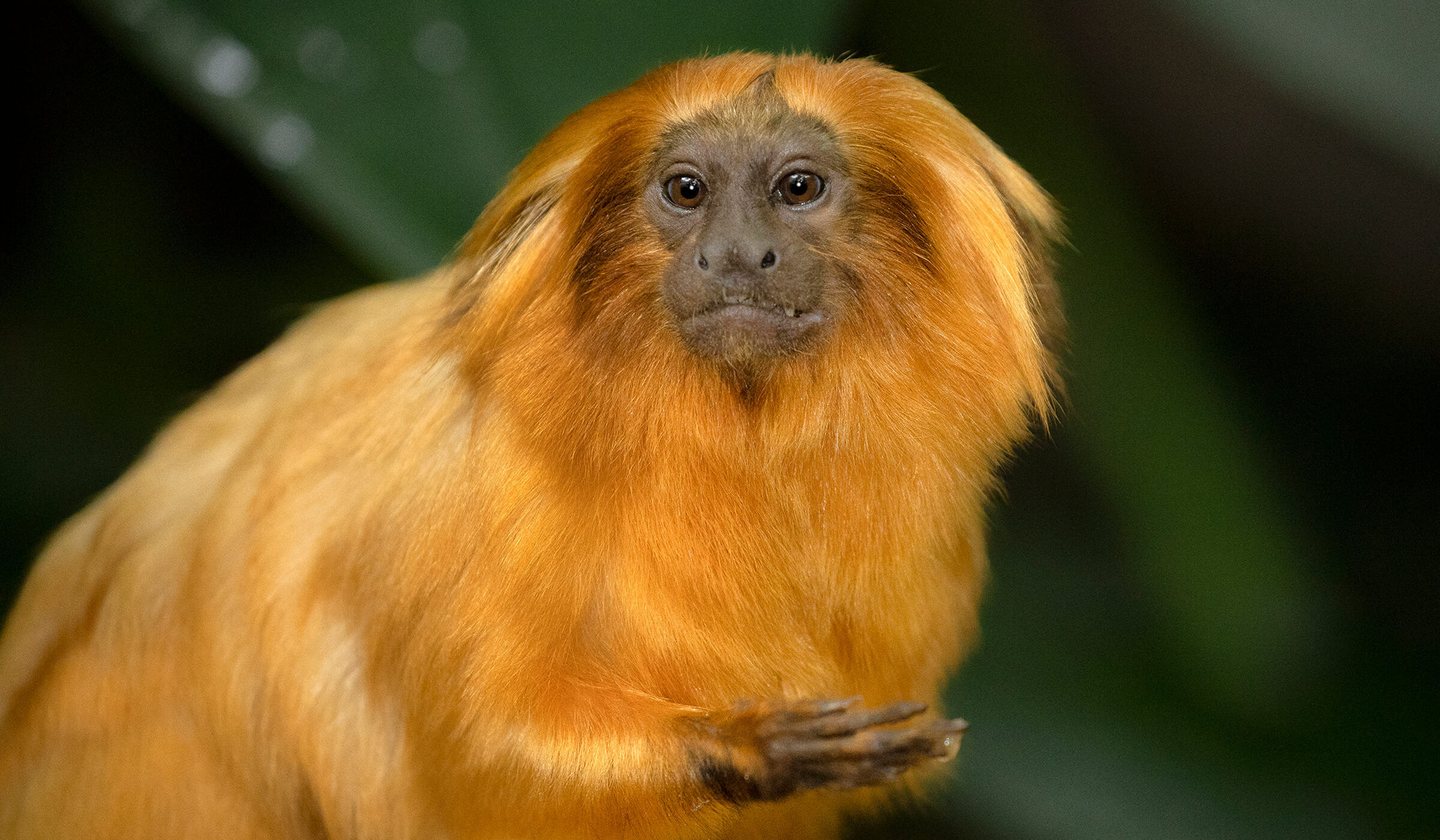
Tiny Tamarins, Big Impacts
There are about 20 tamarin species that are native to Central and South America. Tamarins come in an artful palette, including red-capped, white-lipped, white-footed, golden, moustached, cotton-topped, black-mantled, and four lion species. Golden lion tamarins Leontopithecus rosalia are pint-sized, diurnal, arboreal primates that scour the Atlantic coastal rain forest in Brazil for fruit, insects, flowers, nectar, and small vertebrates. Mostly frugivores, they help regenerate the forest with their seed-laced scat. Named for the fluffy “mane” that frames its dark-skinned face, this tamarin has claw-like nails that provide traction and grip in the trees. Weighing about as much as a box of brown sugar, golden lion tamarins are territorial and mischievous, and live in family groups. Females tend to have twins and, lucky for mom, dad cares for and totes the tots on his back, returning them to her just to nurse. Despite the double bundles of joy and dad’s devotion, these monkeys have a high infant mortality rate, losing over half the young before they reach one year old.
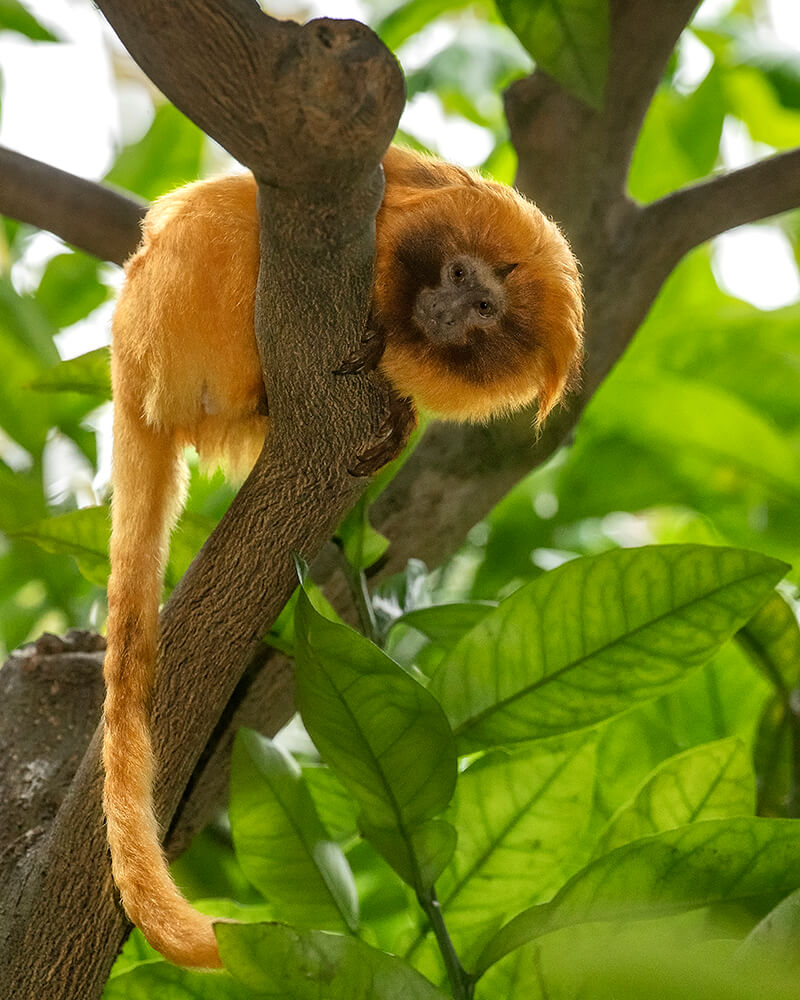
I SEE YOU
The tamarins have plenty of room to scrutinize their admiring public, or retreat into the treetops for some relaxation.
In the 1970s, there were fewer than 200 golden lion tamarins remaining in the wild. However, three decades of international, collaborative conservation efforts through the Golden Lion Tamarin Conservation Program culminated in the species being downlisted from Critically Endangered to Endangered in 2003. The program resulted in a new population being established through the translocation of 47 individual monkeys in six groups, all genetically doomed in isolation until they were brought to a new protected area, the União Biological Reserve. According to the Smithsonian’s National Zoo (which was part of the recovery effort), there are now about 3,200 golden lion tamarins throughout their (fragmented) range; about one-third of them are descendants of the translocated monkeys. Not only did the wild population increase, but the Brazilian government also protected nearly 12 square miles of forests within their range.
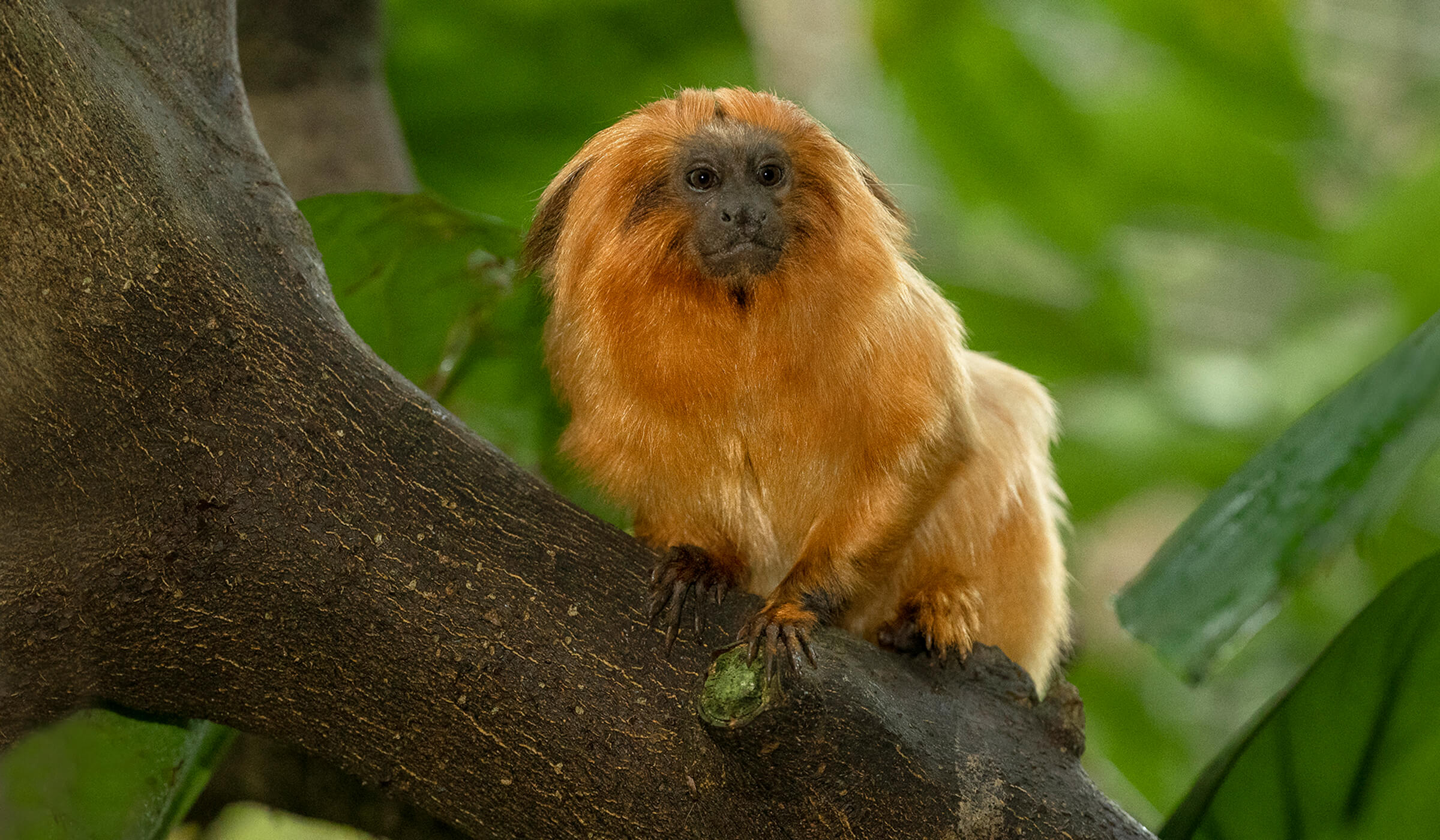
Sultry Microcosm
At the Zoo, Parker Aviary is an oasis where the rest of the city falls away, and a cacophony of bird calls, layers of calming, swaying greens, and the tamarins’ antics make for a soothing visitor respite. To make this happen each day, primate keepers and bird keepers must coordinate their duties. “We need to make sure the tamarins don’t eat the birds’ fruit and the birds don’t eat the high-iron monkey diet,” explained Janice. So the tamarins get their nutritious callitrichid (monkey) breakfast in their holding area before the Zoo opens, while the birds chow down on their fruits out in the aviary. “We have to pull the leftover fruit before the tamarins are let out,” or they will gorge on the blueberries and other high-sugar items they shouldn’t get too much of. “We time it and work together.”

MONKEY SEE
Parker Aviary provides the opportunity for everyone to experience the antics of the golden lion tamarins up close.
Another challenge is getting the semi-free-roaming monkeys to come in at night. Janice explained that the tamarins have scent marked their nest box, and it’s a cozy, safe place for them to sleep. But sometimes the monkeys like to dillydally and stay out “late,” so keepers use their favorites—grapes, blueberries, and worms—as recall rewards. Works like a charm! Come morning, the multi-species dance begins anew.
One of the colorful species that shares the aviary is the toco toucan. Adult toucans have giant, brightly colored bills they use to pluck fruit from trees…or to harangue monkeys. “The tocos could be dangerous to the monkeys, and we don’t want aggression between them,” said Janice. Hence, there is always someone in the aviary with eyes on the monkeys—staff, volunteer, or intern—to keep the animals and guests at a safe distance. But the toucans recently fledged two chicks, and while the young birds were learning aviary etiquette, they wandered into the tamarins’ prized pomelo tree, leading to some tail feather grabbing. Once the boundaries are established, it appears that everyone gets along fine.
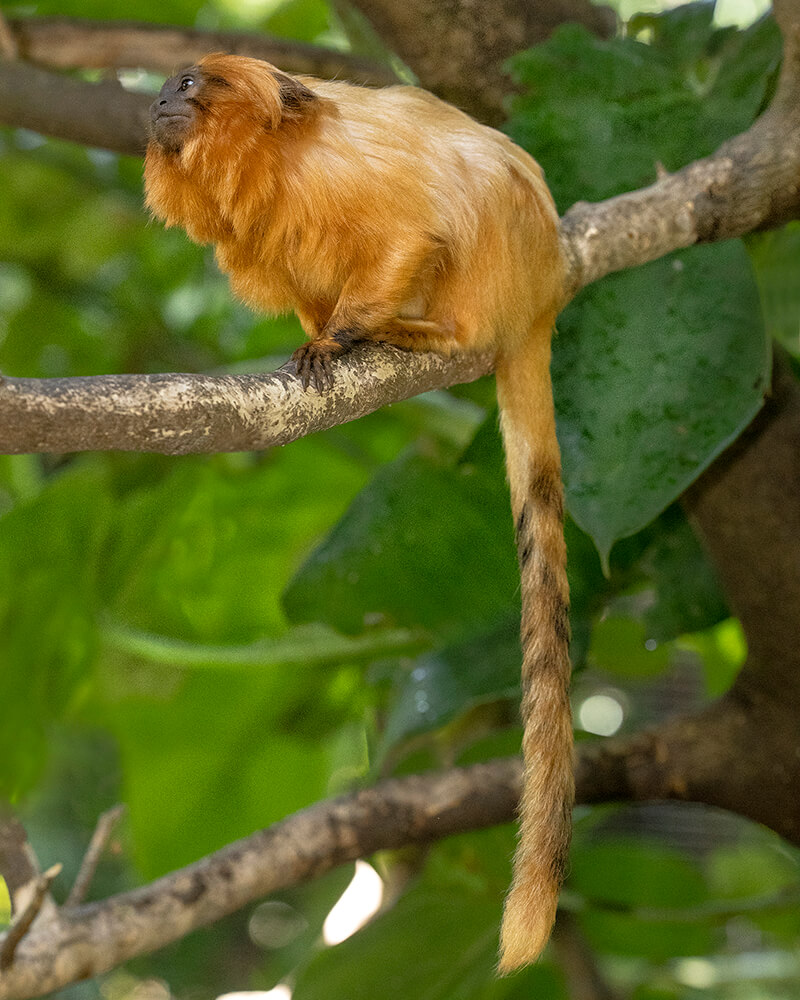
PENNY FOR YOUR THOUGHTS
The darker-tailed tamarin is Penny. Milo’s tail is more golden. There are four lion tamarin species that make up the genus Leontopithecus: golden lion; golden-headed lion; black lion; and black-faced lion tamarin.
Capuchinbirds show off their rasping “mooing” call until they are, literally, blue in the face, as the crested oropendolas weave their hanging nests. While Inca terns chatter in the trees, a blue-crowned motmot digs a burrow in the earth to safeguard her eggs. The fiery-orange Andean cock-of-the-rock proclaims his alpha status, while the hefty toucans clack their bills like percussion instuments. Penny and Milo scamper about in search of a snack or some mischief. “There’s always something new for them to discover in here,” Janice said. And the same goes for our visitors.

